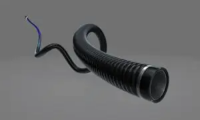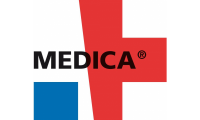-
FDA clears neurovascular aspiration, access catheters from Perfuze
- Source: drugdu
- 177
- January 2, 2024
-
Original and patented consumables are given priority to be included in medical insurance
- Source: drugdu
- 114
- December 30, 2023
-
CMEF 2024
- Source: drugdu
- 210
- December 27, 2023
-
da Vinci Innovation & Training Center Celebrates its Second Anniversary
- Source: drugdu
- 105
- December 27, 2023
-
Accurate Blood Markers for Identifying AKI Could Eliminate Need for Invasive Kidney Biopsies
- Source: drugdu
- 202
- December 22, 2023
-
Cutting-Edge Lab Automation System Supports High-Volume Needs and Provides Faster Results
- Source: drugdu
- 107
- December 21, 2023
-
MEDICA 2024
- Source: drugdu
- 899
- December 20, 2023
-
Smartwatches prove effective in detecting heart arrhythmias in children
- Source: drugdu
- 112
- December 20, 2023
-
Self-Heating Microfluidic Devices Can Detect Diseases in Tiny Blood or Fluid Samples
- Source: drugdu
- 89
- December 19, 2023
-
AI-Enabled Prescription Digital Therapeutics Should Be An Investment Priority
- Source: drugdu
- 96
- December 19, 2023
your submission has already been received.
OK
Subscribe
Please enter a valid Email address!
Submit
The most relevant industry news & insight will be sent to you every two weeks.













